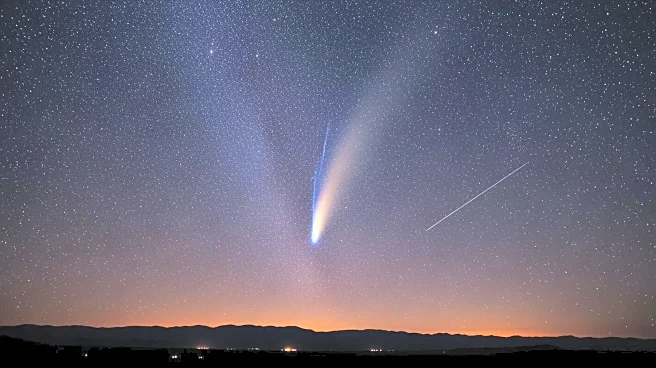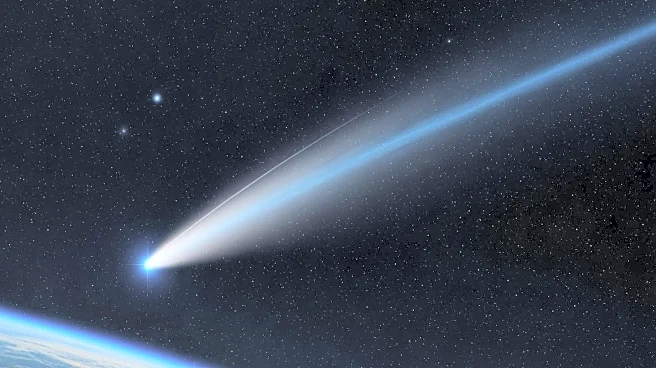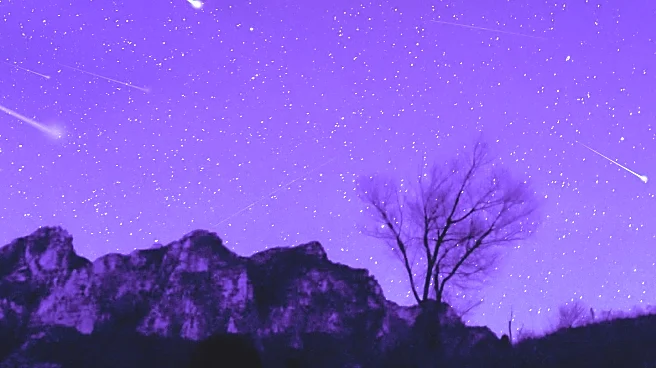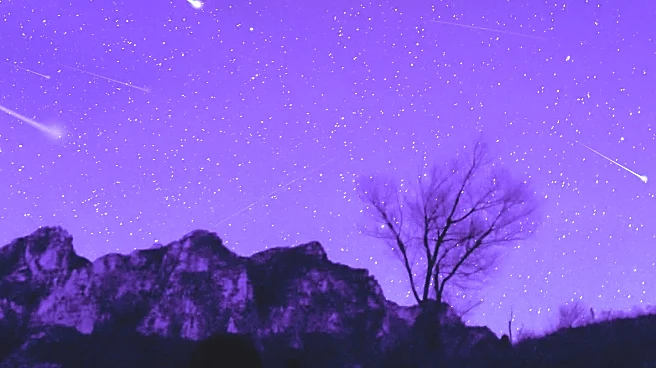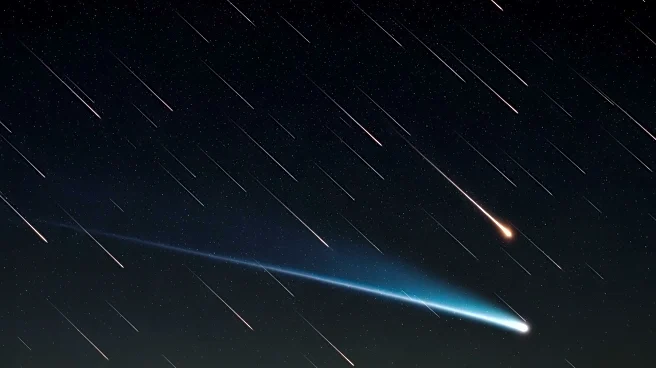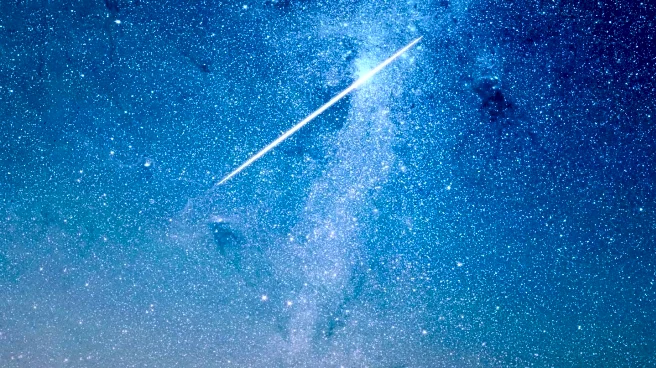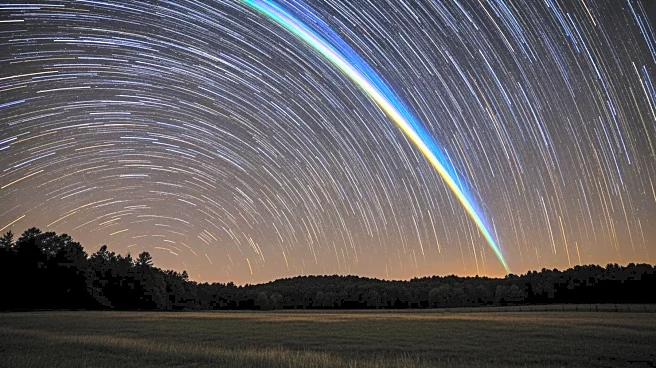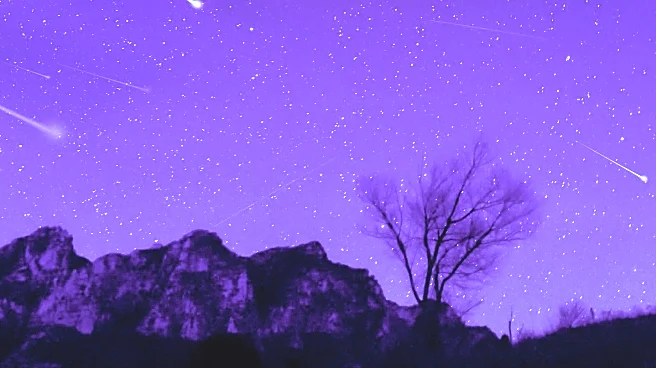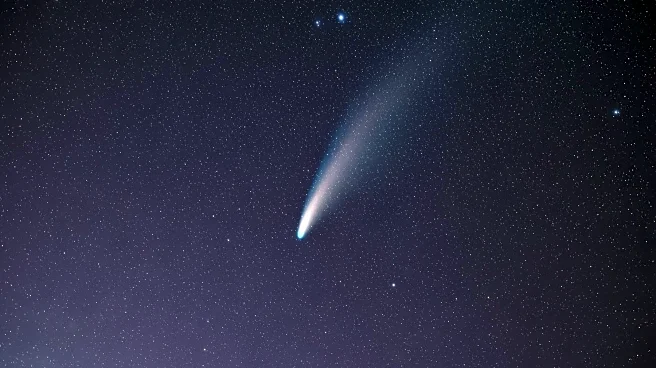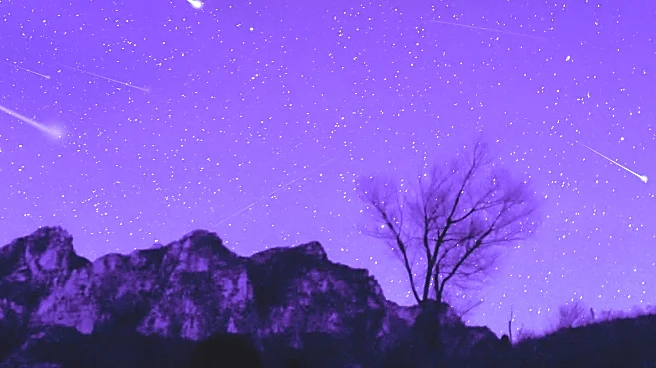What's Happening?
On October 21, 2025, skywatchers are treated to a series of astronomical events. The Orionid meteor shower peaks, coinciding with a New Moon, allowing for optimal viewing conditions with an expected 20 meteors per hour. The radiant of the shower is located
near Betelgeuse in the constellation Orion. Additionally, Comet C/2025 A6 (Lemmon) makes its closest approach to Earth at 28.6 million miles, visible as a 5th-magnitude object in the constellation Boötes. A close conjunction of Mercury and Mars is also visible in the evening sky, with Mercury appearing 2 degrees south of Mars. Furthermore, a three-hour transit of Titan across Saturn's disk is scheduled, beginning at 6:42 P.M. EDT, with a potential graze of Titan's shadow near Saturn's north pole.
Why It's Important?
These celestial events offer significant opportunities for both amateur and professional astronomers to observe and study. The Orionid meteor shower, originating from Halley's Comet, provides insights into cometary debris and its interaction with Earth's atmosphere. Comet Lemmon's proximity allows for detailed observation of its composition and behavior, contributing to our understanding of cometary dynamics. The conjunction of Mercury and Mars offers a chance to study planetary alignments, while Titan's transit across Saturn provides data on the moon's orbit and Saturn's atmospheric conditions. These events also engage the public, fostering interest in astronomy and science education.
What's Next?
Observers are encouraged to take advantage of the clear skies and minimal moonlight to view these events. The Orionid meteor shower will continue to be visible for several days, though at reduced rates. Comet Lemmon will remain observable in the morning and evening skies, providing ongoing opportunities for observation. The conjunction of Mercury and Mars will gradually separate, while Titan's transit offers a rare chance to witness a potential shadow graze. Astronomers and enthusiasts are advised to document their observations and share findings with the broader scientific community.
